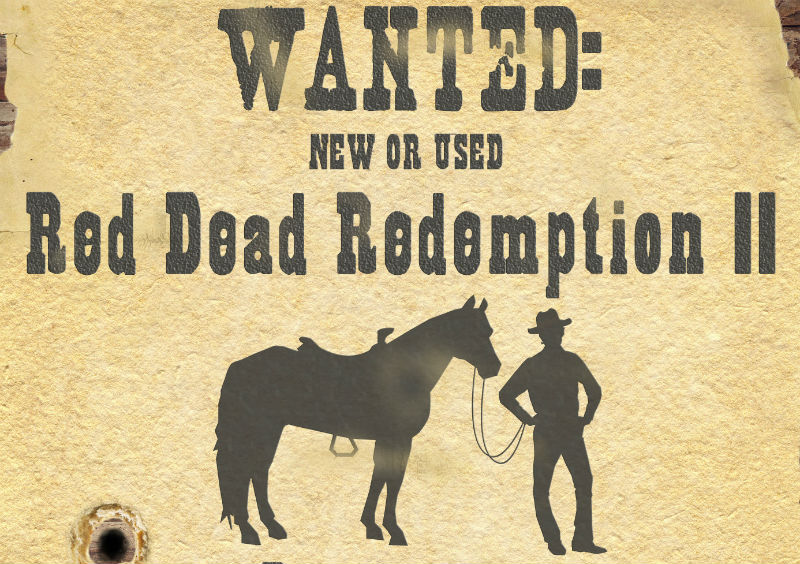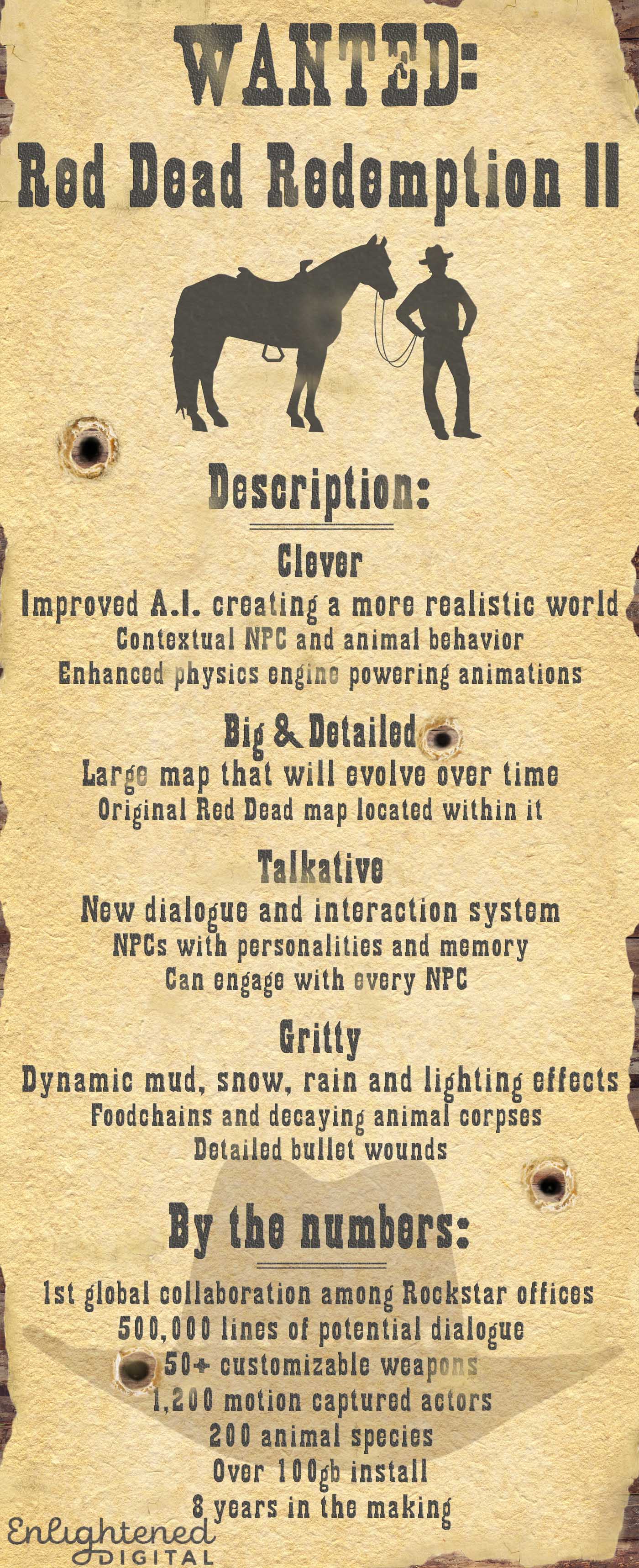This is a guest post by our friend at Enlightened-Digital, Brian Thomas. Brian has written other articles about Red Dead Redemption 2 and Fortnite.
After nearly eight years of development, Rockstar will officially release Red Dead Redemption 2 this Friday. The anticipated open world game benefited from a first-time global collaboration among the company’s offices in what is arguably its most intense effort to create an immersive experience. It rides off of popularity from the original Red Dead and some expected features related to its intelligent dynamic systems and massive open world. Rockstar’s last game, Grand Theft Auto 5, ended up as the highest grossing entertainment product of all time with about 6 billion dollars in purchases spanning the last generation of consoles and its port to the current gen. As the company’s first game created for the hardware current generation of consoles, Red Dead Redemption 2 is posed to make a dent in the market with a product that has been deemed to serve as a new benchmark in open world gaming.
Potential buyers are finding excitement in accounts of the game’s artificial intelligence that provides contextualized, dynamic character responses and event outcomes in Rockstar’s large open world. With a database of 500,000 lines of dialogue to draw from and 1,200 motion-tracked actors, the game will decide on and generate appropriate NPC (non playable character) actions. This allows the user to interact with every NPC in a realistic way. Players can select from contextualized actions and responses with a new interaction system to create dynamic back and forths that result in organic outcomes based on what the player chooses to do. These interactions also find impact from the “personality” of the NPC as well as the visual or hygenial conditions of the user.
Each NPC possesses a day-night cycle that aims to mimic lives in a simulated manner. These characters are connected to the world with relationships to each other, work to do, and places to be. Their personalities may bleed into interactions with the player such that their responses are impacted by who they are. Also influencing the perceived behavior of these NPCs is the condition of the user’s player. Things like mud and dirt and unkept, growing hair will change how characters react to the player in their interactions. The game’s intelligence systems produce dynamic outcomes in regards to the impact of environment in order to make this happen.
Taking into account specifics of the controlled player and NPCs, like placement of footsteps, snow and mud reacts as it should. Characters’ legs and bodies push around parts of these environmental material. People also become dirty or wet specifically in the areas that touch the dirt, water, snow, and mud encountered in the world. These dynamic outcomes owe to the game’s intelligence systems that account for various conditions to generate contextualized responses in real time. The simulated food chains created by 200 animal species perform in a similarly organic manner. Species interact in real time as they hunt, scavenge, and roam around with unique behavior based on the type of animal. The combination of these systems with the NPCs hope to provide the user a realistic and immersive experience in the world.
Soon, we will see how Red Dead Redemption 2 lives up to the accounts of its intelligent, organic outcome-creating open world. The game surely represents a step up in realism from previous open world experiences. People have experienced its enhanced A.I. that creates interactable NPCs, in addition to a large open world harnessing dynamic environmental and animal systems. It will still be interesting to witness the extents of its intelligence. As technology improves, game companies are likely to continue to produce experiences that show games to be what they are: simulations that attempt to mimic slants of reality. Rockstar’s Aaron Garbut refers to Red Dead Redemption 2 as “a place for you to get lost in. “ By the sounds of it, gamers are soon to find themselves immersed in the closest thing we current have to Westworld.


Leave a Reply
You must be logged in to post a comment.